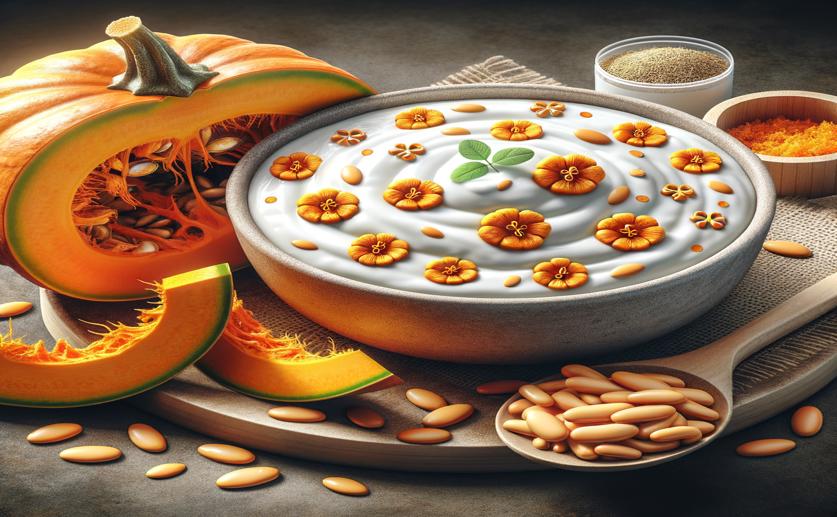
Creating Healthy Yogurt-Like Snacks Using Beneficial Bacteria and Pumpkin Waste
Jenn Hoskins
12th August, 2024

Image Source: Natural Science News, 2024
Key Findings
- The study by Sakarya University found that adding pumpkin powder to yogurt increased its water-holding capacity, reducing liquid separation and improving texture
- Probiotics E. faecium and E. faecalis maintained high viable counts throughout the 28-day storage period, ensuring their health benefits
- The addition of pumpkin powder and probiotics did not negatively impact the yogurt's taste, smell, or consistency, making it acceptable to consumers
References
Main Study
1) Production of Set-Type Probiotic and Prebiotic Yogurt-Like Products Using Enterococcus faecium and Enterococcus faecalis Strains in Combination with Pumpkin Waste.
Published 9th August, 2024
https://doi.org/10.1016/j.micpath.2024.106844
Related Studies
2) Do Your Kids Get What You Paid for? Evaluation of Commercially Available Probiotic Products Intended for Children in the Republic of the Philippines and the Republic of Korea.
3) Expert consensus document: The International Scientific Association for Probiotics and Prebiotics (ISAPP) consensus statement on the definition and scope of prebiotics.
4) Probiotics for treatment of acute diarrhoea in children: randomised clinical trial of five different preparations.
Journal: BMJ (Clinical research ed.), Issue: Vol 335, Issue 7615, Aug 2007
5) Preparation and Functional Properties of Synbiotic Yogurt Fermented with Lactobacillus brevis PML1 Derived from a Fermented Cereal-Dairy Product.



 1st March, 2024 | Greg Howard
1st March, 2024 | Greg Howard